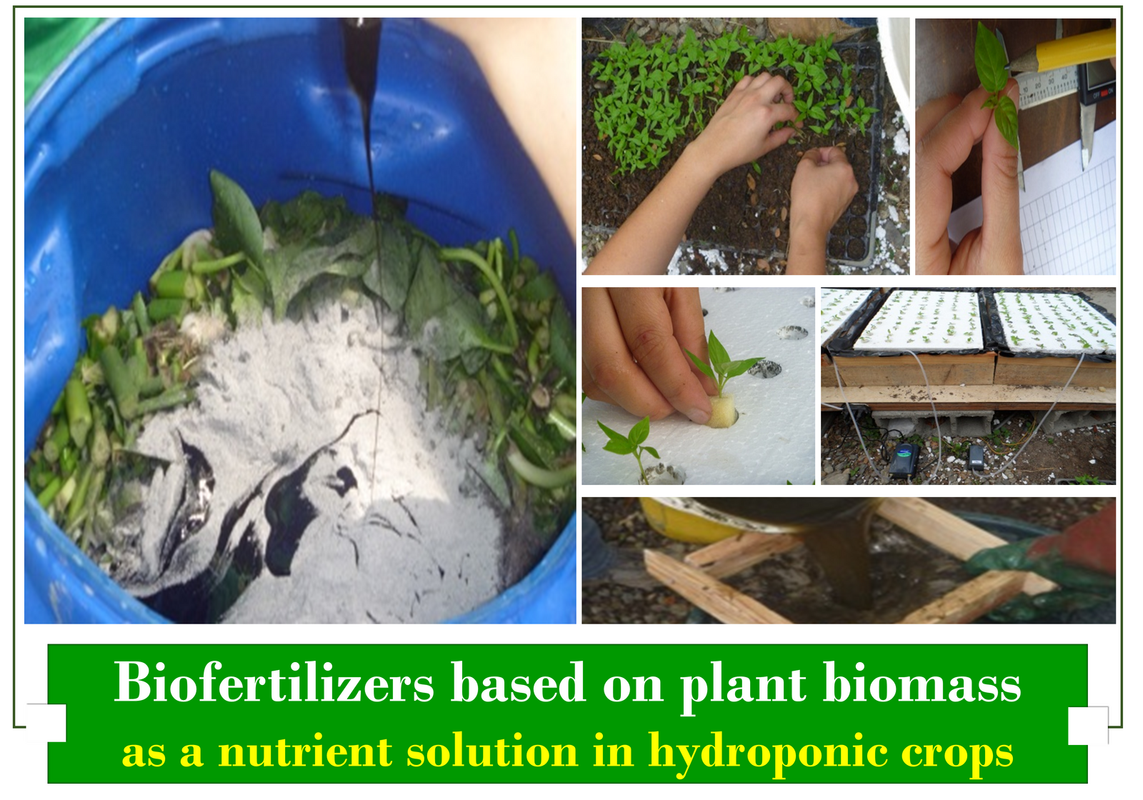 ---
---
Greetings to all users of the academic communities of the #HIVE platform, especially to my friends and members of #STEMsocial, in this opportunity, I will share with you an unpublished material on the technological utility of Eichhornia crassipes, as a liquid biofertilizer and its agronomic use as a nutrient solution in hydroponic crops.
---
Introduction
---At present, the use of ecologically viable agricultural biofertilizers has become a scientifically valid sustainable option for agriculture, due to the efforts of the scientific community in the constant search to solve the growing dependence on the use of synthetic products.
Basically, this dependence on the use of synthetic products is part of the monopoly that has been established since the emergence of the so-called green revolution, whose technologies have historically caused negative impacts, affecting natural resources, causing risks to human health, threatening the survival of species in the fauna and flora ecosystems, and most alarmingly, deteriorating biodiversity and soil fertility.
The situation described above has led to an inclination of agricultural activity towards the development of an agriculture more in line with practices that respect nature, that does not compromise the health of producers and consumers, that is socially, economically and ecologically fair, profitable and healthy, hence the objective of this publication is to promote this type of ecological approach.
---
Conceptual Overview
---Agricultural potential of biofertilizers
Among the existing possibilities to produce safe food free of chemical traces, and at the same time avoid soil loss, is the use of biofertilizers as an ecological fertilization practice, since these organic products provide the following advantages:
- They contain humic substances, essential for the absorption of nutrients.
- They are a mineral source of nutrients, which promote metabolic reactions in vegetables.
- Control the populations of pathogenic microorganisms, qualified as harmful in the phenological, growth and development stages of agricultural crops.
Hydroponics as an ecological alternative
Hydroponics is considered as another ecological practice that provides advantages in the reduction of soil loss and deterioration, because its production system does not depend on heavy machinery, does not require large extensions of land, provides a higher productive quality and shortens harvest cycles.
Generally, hydroponics as an agricultural technique is used in the production of vegetables, becoming an alternative for producers to produce healthy and nutritionally acceptable food.
Consequently, and based on what has already been exposed in this first part of the post, the main purpose of this article is to know the physical-chemical and chemical quality of three doses of liquid biofertilizers, based on the Aquatic Macrophyte Eichhornia crassipes, and its effect on morphophenological variables of growth and development, in addition to the nutritional status of chilli bell pepper (Capsicum chinense Jacq.) seedlings under hydroponic conditions.
---
Agro-morphological field study
---Experimental aspects
The research was carried out under hydroponic conditions in the nursery of the Botanical Garden of the Universidad Nacional Experimental Sur de Lago "Jesús María Semprum" (VIJAUNESUR), located in the Municipality of Colón, Zulia State..
The methodology used was developed in two phases; In the first phase, the biofertilizer was elaborated in an artisanal way, in a process of Anaerobic Fermentation for 90 days and in the second phase, a field trial was carried out where 3 doses of biofertilizer (100, 75 and 50%) and a control (inorganic nutrient solution) were used in a hydroponic system, with sweet bell pepper plants, the experimental design was in randomized blocks with three replications, each plant subject to study represented an experimental unit.
---
Materials
---- 50 kg of Eichhornia crassipes
- 25 kg of cattle manure
- 1 kg of yeast (Saccharomyces cerevisiae M.)
- 1 liter of molasses
- 1 kg of agricultural lime
- 1 kg of wood ash
- 1 liter of bovine milk whey
- 1 tonel of 200L
- 1 plastic bottle
- 1 hose of 1.5 mts
Preparation of Biofertilizer
---Cutting of plant material
With the help of VIJAUNESUR technical staff and interns, 50 kg of fresh plants of E. crassipes, were collected and cut into 2.5 cm pieces to facilitate their decomposition.

Fig. 2 Organographic cuts. Author: @lupafilotaxia.






